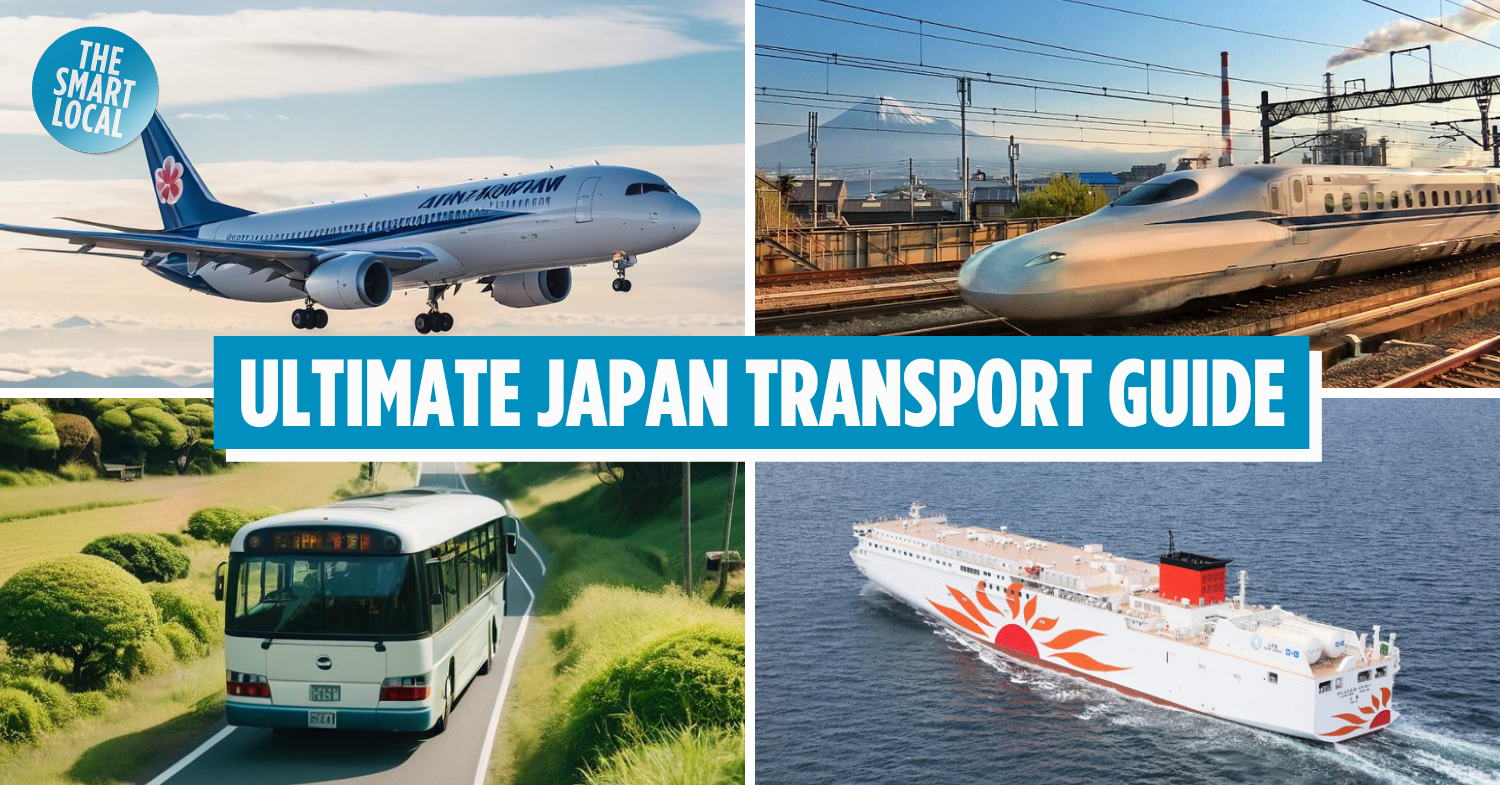The ultimate Japan transport guide – Which mode is better?
The excitement Singaporeans have for travelling to Japan is probably never going to die down. It’s the land of onsen towns, the prettiest cherry blossom spots, and Super Nintendo World, just to name a few. Whether you’ve been there a hundred times or have it on your bucket list, this Japan transport guide will come in handy when planning your itinerary.
We’ve created the ultimate guide comparing 5 modes of transport – train, bus, ferry, flight, and car – complete with prices so that your next trip is as smooth as purin.
Table of Contents
How do you travel to different cities in Japan?
There are several transport methods to travel to different cities in Japan including buses, trains, domestic flights, and ferries. The most popular way to travel, though, is by train.
If you have an international driving license, you can also consider renting a car in Japan and driving around the country with the help of their sophisticated built-in navigation systems.
| Type | Average Cost* | Best For |
| Train | S$100-S$300 | Travellers who prioritise speed and comfort |
| Bus | S$10-S$140 | Travellers on a budget, solo backpackers, or those with flexible schedules |
| Domestic Flight | S$85-S$280 | Travellers with tight itineraries and families with small children |
| Ferry | S$120-S$240 | Travellers with a relaxing schedule and who seek a unique experience |
| Car Rental | S$45-S$180/day + fuel costs | Travellers who want independence and have experience driving in Japan |
Note: Costs are approximate and may vary depending on specific routes and travel times.
What is the cheapest way to travel around Japan?
Buses are the cheapest way to travel around Japan but are less popular than trains as they take longer to reach your destination. Travelling by car can be quite affordable too, but you have to have an International Driving Permit in order to do so.
Getting around Japan by train
Most reliable way to get around
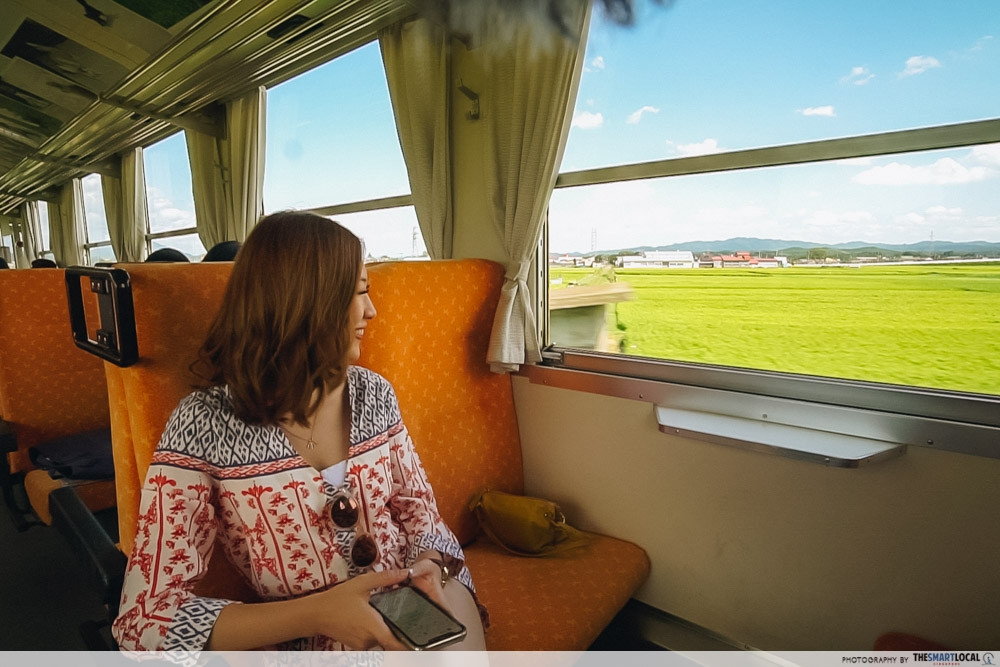
The Shinkansen bullet trains in Japan are famous and for good reason. They are punctual, reliable, and fast. Train travel in Japan has been the most popular method of intercity travel, even if just for the novelty of travelling in an impressive 300km/h vehicle. There are also several train types and passes that get you around, so read on for our picks for the best options.
Individual train tickets
The most basic local trains have fares starting at ¥20 (~S$0.18). However, these can be rather slow as they stop at every station on their respective lines. Limited Express trains, priced at ¥500 (~S$4.50) may be faster as they skip some stations, but they still take a while to reach farther destinations.
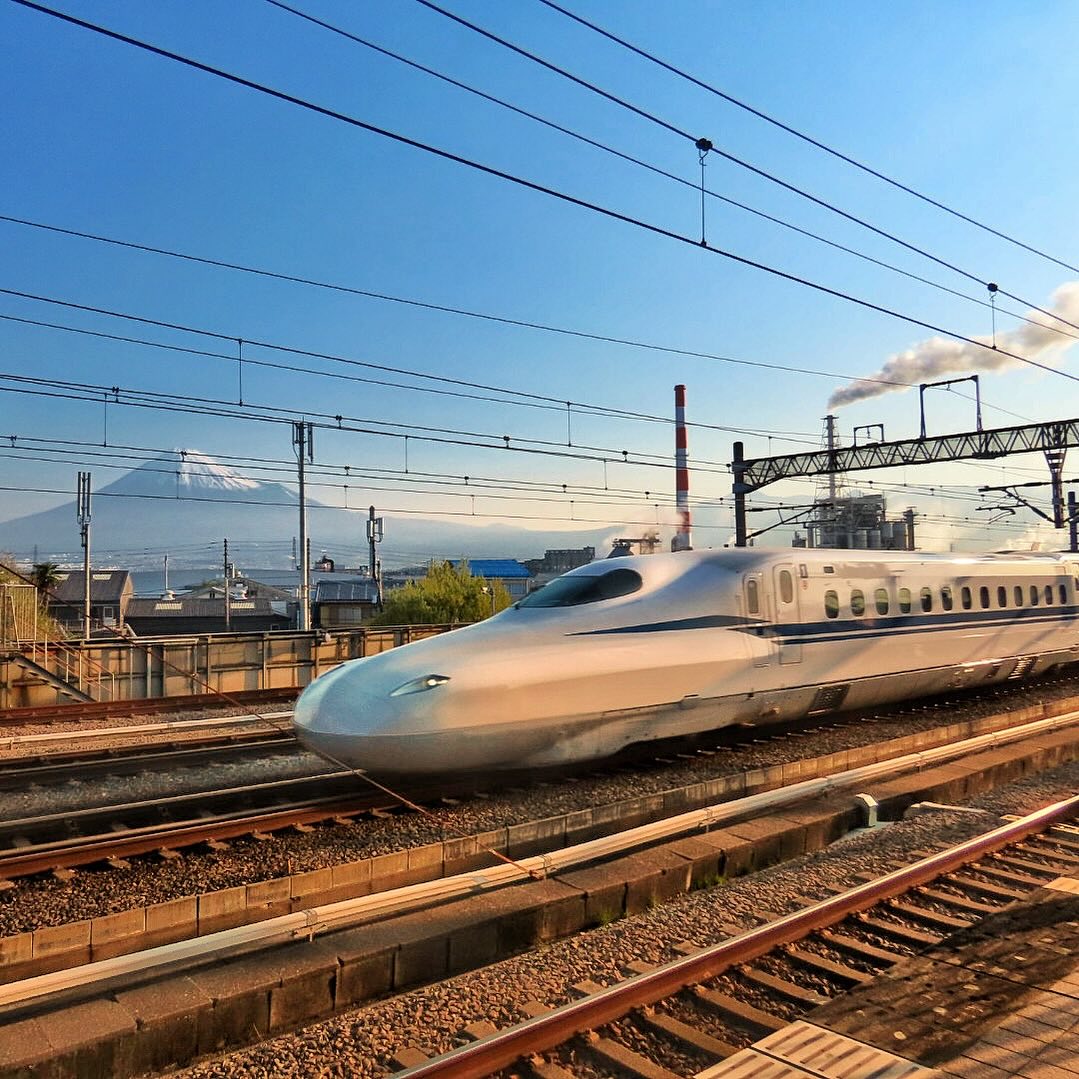
Spot Mount Fuji on the Shinkansen train journey between Tokyo and Osaka.
Image credit: @zenplanes via Instagram
Therefore, the fastest way to take individual trains to different cities would be by purchasing single-journey Shinkansen tickets. These speedy trains will get you where you need to be across the country in just a matter of 3-4 hours. Popular journeys like Tokyo to Kyoto or Tokyo to Hiroshima will cost you S$119.38 and S$164.73, respectively.
In fact, the journey from Osaka to Kyoto is only 15 minutes via the bullet train, so it really depends on which city you are travelling to.
Japan Railway Passes
If you are travelling to multiple cities, then all the individual Shinkansen trips can add up. In that case, a railway pass may be more worth it.
The most popular railway pass in Japan is the Japan Railway Pass, more commonly known as the JR Pass. This pass allows tourists to travel all across the country on unlimited JR brand train trips, local JR buses, and get free seat reservations, over a specific range of days.
JR Passes used to be the cheapest way to get around Japan. However, with recent price increases in 2024, a 7-day pass can cost you ¥50,000 (~S$450) and a 21-day pass can cost you ¥100,000 (~S$896).
A cheaper alternative would be to get the JR Regional Passes. This pass allows for unlimited train travel and some access to local buses and ferries, limited to specific regions. For example, the JR West Area Pass will allow you to travel all around the western prefecture of Japan, including Osaka and Kyoto.
These passes are usually slightly more than half the price of a JR Pass, and therefore, stacking them may allow you to plan for more destinations with the same budget and longer time spent in each location. Some JR Regional passes also offer access to a few non-JR brand trains and buses.
| Region | Pass | Price | Validity |
| Tokyo-Sapporo | JR East South Hokkaido Pass | ¥35,000 (~S$316) | 6 days |
| Places in & around Tokyo | Tokyo-Wide Pass | ¥15,000 (~S$134) | 3 days |
| Osaka, Kyoto, Kobe, Hiroshima | JR West All Area Pass | ¥26,000 (~S$233) | 7 days |
| Osaka, Kyoto, Nara | JR Kansai Wide Area Pass | ¥12,000 (~S$108) | 5 days |
| Hokkaido | Hokkaido Rail Pass | ¥20,000 (~S$179)
¥26,000 (~S$233)
¥32,000 (~S$287) |
5 days 7 days 10 days |
For more information, visit the Japan Rail Pass website.
Best for: Travellers who are going to Japan for the first time and want to experience the Shinkansen and other scenic train rides in Japan. Regional passes may also be best for travellers who wish to explore specific regions in Japan rather than the whole country.
Tips for taking the train in Japan
- If you buy your JR Pass/JR Regional Pass online, you get an exchange order instead of the actual passes. You then need to go to a JR office at the train station to redeem the actual pass during opening hours. The hours vary in each region but most offices are open from about 10am-6pm. So, remember to factor this in during your planning.
- Remember to reserve your seats beforehand at JR service counters at the station or risk standing on a train for the entire journey.
- Luggage storage for larger suitcases also has to be reserved, or you can try out Japan’s luggage transport service which takes your bag to your destination on a cargo train for you to collect upon arrival.
Getting around Japan by bus
Cheapest way to get around
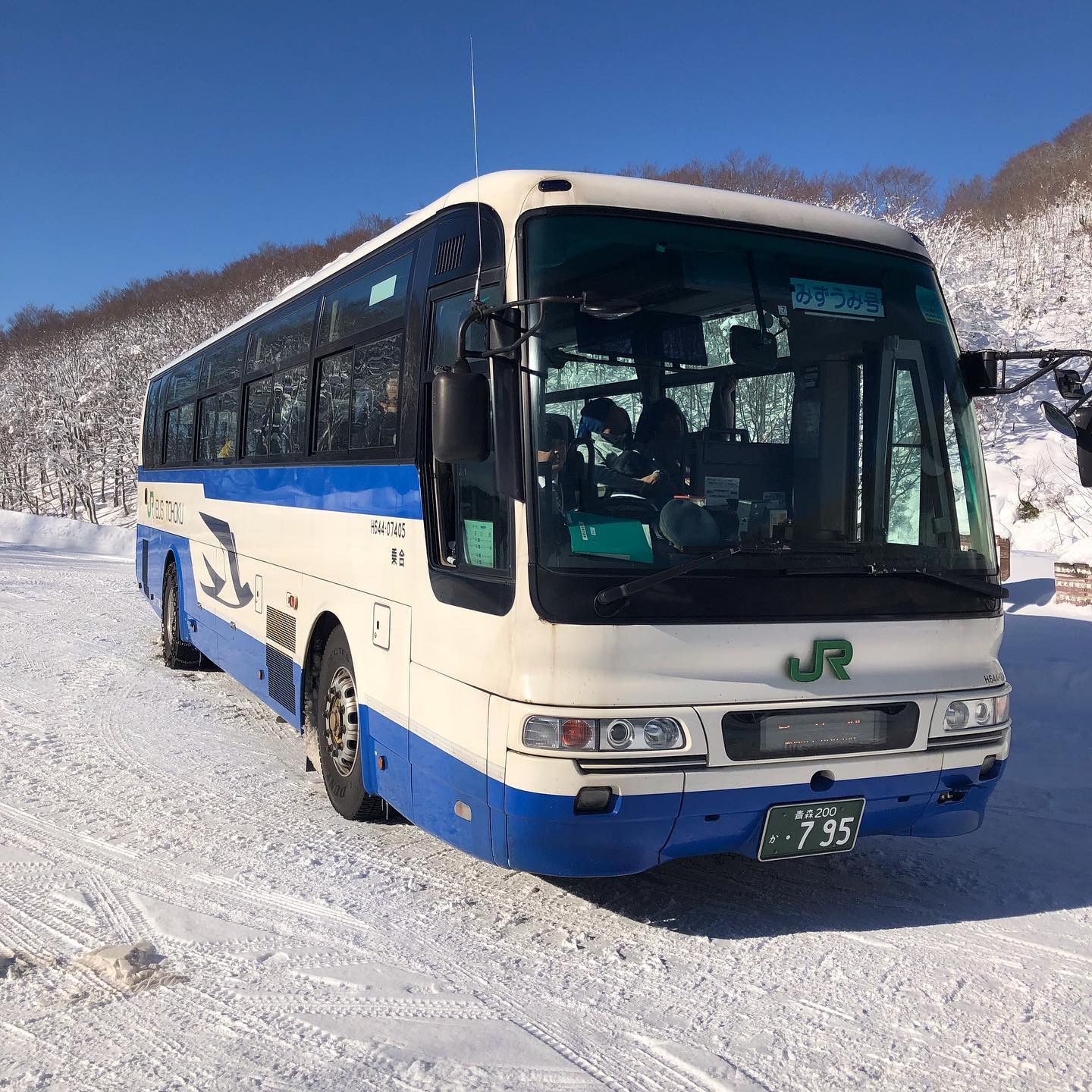 Image credit: @tsukki3 via Instagram
Image credit: @tsukki3 via Instagram
If you’re somebody who loves to go from Singapore to Malaysia by bus, or you’re a bit tight on your budget, try out Japan’s highway buses. These buses are often as punctual as the trains but the journey can take much longer. For example, a trip from Tokyo to Osaka could take you 8-9 hours, as opposed to 2.5 hours by train.
However, the prices can’t be beat as a 3-day bus pass will set you back just ¥10,200 (~S$91.40). These passes are valid for non-consecutive days which means you can use the same pass to get to your next destination 3 times even with a few days’ gap in between.
An overnight bus would be counted as 1 day, so look at it as 3 bus trips for the price of around S$90, which results in around S$30 a trip.
Additionally, most buses have reclining seats, more space to store your luggage in their trunks, and toilets on board. Some even have WiFi, so those hours will pass by with ease.
| Service Providers | Destinations | Price | Validity
(non-consecutive days) |
| Japan Bus Pass by Willer Express | Includes destinations from Tokyo, Osaka and Kyoto | ¥10,200 (MT*) (~S$91.40) ¥12,800 (A*) (~S$115) ¥12,800 (MT) (~S$115) ¥15,300 (A) (~S$137) ¥15,300 (MT) (~S$137) |
3 days
5 days
7 days |
| JR Buses | Bus stops all across the country, but must check for JR brand buses only | ¥1,000-¥5,000 (~S$8.94-S$44.70) | Per journey |
*MT is a weekday only pass, valid from Monday-Thursday and A is an any day pass.
Best for: Travellers on a budget, solo backpackers, or those with more flexible schedules.
Tips for taking the bus in Japan
- Make sure to purchase tickets online beforehand via Willer Express or Japan Bus Online.
- There are buses like JR buses which aren’t specifically overnight buses, and may not have luggage space or toilets, so make sure to pick the brand that fits your needs.
Getting around Japan by flight
Quickest way to get around
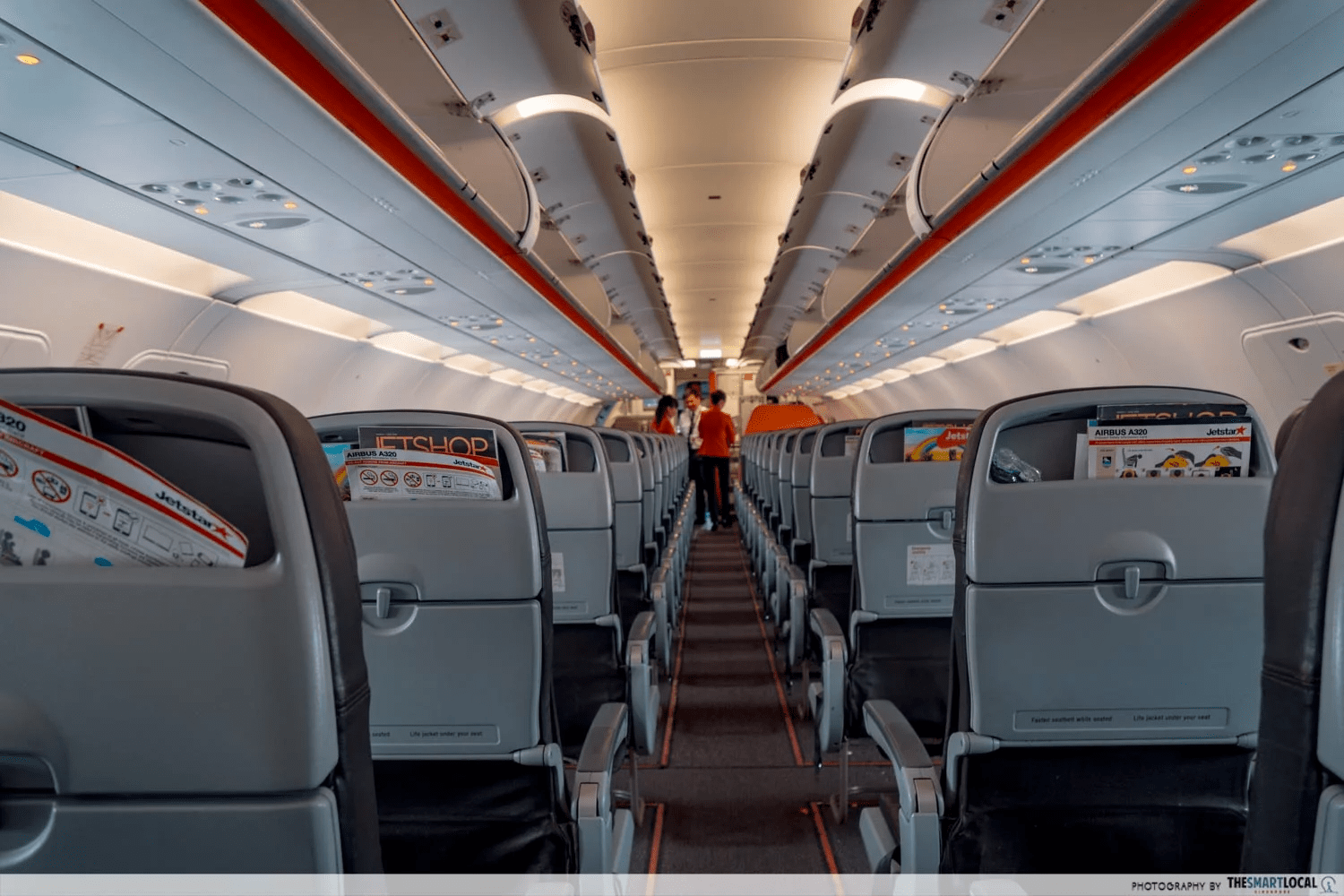
Contrary to what most people think, domestic flights around Japan aren’t super exorbitant. In fact, with the time saved it might end up being far more worth it. For example, a flight from Tokyo to Sapporo will take you just 1.5 hours as compared to 8 hours via train.
There are also several domestic airlines, ranging from budget to luxurious, for you to choose from. The Tokyo to Sapporo trip will cost you around S$280 on Japan Airlines and as low as S$85 on brands like Jetstar and Peach Aviation.
Having said that, some locations aren’t accessible through direct flights,so you’ll need to check your destination beforehand. Don’t forget that most budget airlines also don’t come with free check-in baggage and meals.
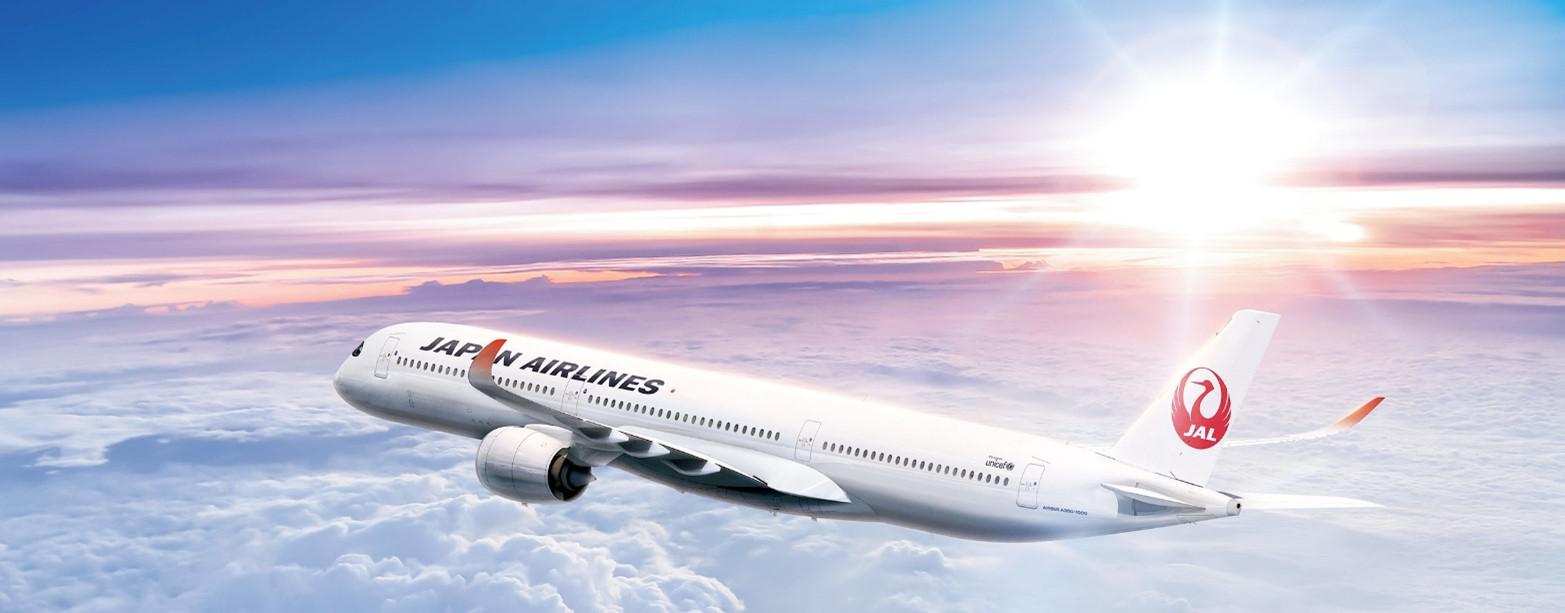 Image credit: Japan Airlines
Image credit: Japan Airlines
Japan Airlines’ Japan Explorer Pass
For even more subsidised pricing, Japan Airlines launched their JAL Japan Explorer Pass, which has a specialised price for foreign passport holders. This price only applies to those with economy class tickets, for a limited number of tickets, so it’s fastest fingers first on whether you snag the deal or not.
Shorter routes, like Tokyo to Nagoya start from ¥7,000 (~S$62.70, U.P.S$107); mid-length routes like Tokyo to Akita are priced from ¥11,000 (~S$98.50, U.P. S$149); and long routes like Tokyo to Kyushu are from ¥14,300 (~S$128, U.P. S$199).
Best for: Travellers with tight itineraries and families with small children.
Getting around by ferry
Most scenic way to get around
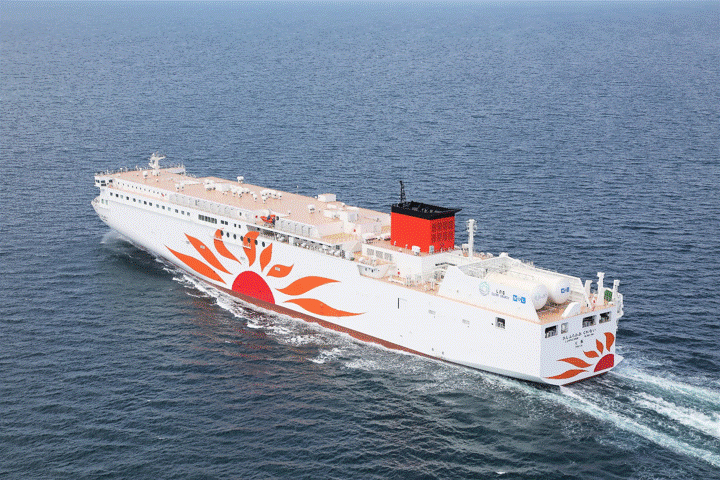
Image credit: Ferry Sunflower
Ferries are usually written off for their long travel times and expensive price tags, but you won’t want to miss the experience of travelling on Japan’s intercity ferries.
Picture it: a grand staircase and chandelier, an all-you-can-eat sashimi buffet, and a free-to-use onsen.
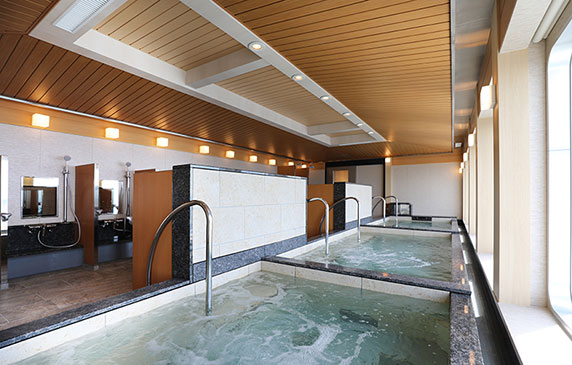
Image credit: Ferry Sunflower
Most ferries, like the Sunflower Murasaki travelling from Osaka to Beppu, may take 12 hours or more to get to your destination, but they are chock full of facilities like buffets, steam rooms, and live entertainment.
However, it’s important to carry cash as most of the stores and vending machines on board only accept cash. It’s also important to get a good data package as some ferries don’t have Wi-Fi onboard.
| City & Port | Route | Frequency | 2nd class (no bed) | First class | Duration |
| Tokyo: Tokyo Ferry Terminal | Tokyo-Kitakyushu
Tokyo-Tokushima |
1/day
1/day |
¥20,000 (~S$180)
¥14,000 (~S$126) |
¥23,000 (~S$206)
¥15,000 (~S$136) |
34 hours
18 hours |
| Osaka: Osaka South Port | Osaka-Beppu
Osaka-Shibushi |
1/day
1/day |
¥13,000 (~S$117)
¥17,000 (~S$117) |
¥25,000 (~S$224)
¥27,000 (~S$241) |
12 hours
15 hours |
Best for: Travellers with a relaxing schedule and who want to try something new.
BTW, there are even ferries from Japan to Korea, like the JR Queen Beetle which goes from Fukuoka to Busan and the Panstar Dream cruise which gets you from Osaka to Busan.
Getting around by car
Best method for group travelling
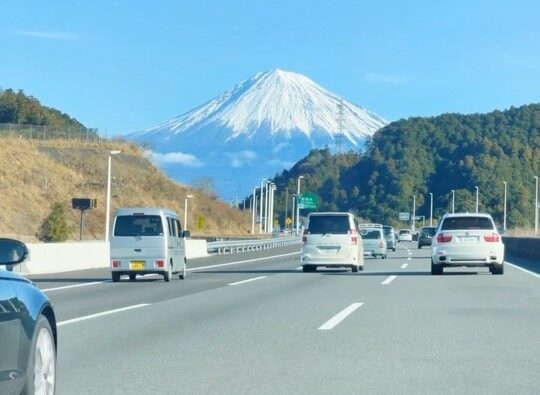
Image adapted from: @asisevivejapon via Instagram
If you’ve tested all of Singapore’s road trip ideas and are ready to take the gang overseas, try renting a car in Japan. You won’t have to worry about departure times and luggage storage. All you need is an International Driver’s Permit and to choose a rental company, and you’ll be on your way.
Car renting is surprisingly affordable in Japan with most companies like Toyota Rentacar or Nippon Rentacar charging ¥5,000/24 hours (~S$44.80) for a subcompact car and up to ¥20,000/24 hours (~S$179) for a van.
As for fuel costs, the current price of a litre of gas in Japan is ¥177 (~S$1.60), which is also cheaper compared to the average of S$3 in Singapore.
However, driving would work better in small towns as they are less crowded and usually have ample parking space. On the other hand, cities can have hours’ worth of traffic jams to deal with. But at the same time, remember to download your journey on Google Maps as the network may be poor in smaller villages and signs are largely in Japanese.
Best for: Travellers who want more independence over their schedules and have been to Japan a few times to know the landscape.
Getting around by foot
Just kidding!
How to get around in Japan
At the end of the day, we’d advise you to be mindful of what experience you want out of your trip. For someone who wants to indulge in the joys of slow travel, a relaxing road trip with scenic views could be the best option. If you’re prone to getting seasick or are strapped for time, take to the skies instead and get more time to visit a variety of cities.
In some cases, a hybrid plan, such as stacking different regional passes, or taking a combination of buses and flights may also have you saving a few bucks.
For other Japan travel guides, check out:
Cover image adapted from: Ferry Sunflower, @zennplanes via Instagram
